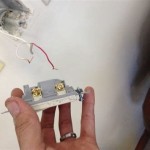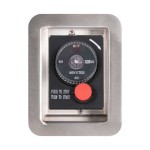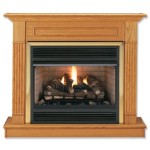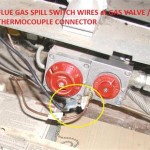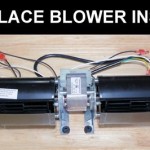Cost To Reface a Brick Fireplace: A Comprehensive Guide
Refacing a brick fireplace can dramatically transform a living space, injecting new life and style into a room. Whether the existing brick is outdated, damaged, or simply not aligned with current aesthetic preferences, refacing offers a cost-effective alternative to a complete fireplace replacement. Understanding the cost implications associated with this project is crucial for budgeting and making informed decisions.
Several factors contribute to the overall cost of refacing a brick fireplace. These include the size of the fireplace, the complexity of the design, the materials chosen, and the labor required for installation. Geographic location also plays a role, as labor costs and material prices can vary significantly across different regions.
This article aims to provide a detailed breakdown of the costs associated with refacing a brick fireplace, exploring the various material options, labor considerations, and potential supplementary expenses. By understanding these elements, homeowners can better estimate the cost of their project and ensure a successful outcome.
Key Factors Influencing Refacing Costs
The cost to reface a brick fireplace is not a static figure. It is influenced by several interconnected factors that need to be carefully considered during the planning phase. These factors can significantly impact the final price, making it essential to thoroughly evaluate each aspect before embarking on the project.
1. Size and Complexity: The dimensions of the fireplace, including its height, width, and depth, directly correlate with the amount of material required for refacing. A larger fireplace naturally necessitates more materials, increasing the overall cost. Similarly, the complexity of the design plays a crucial role. Intricate patterns, custom shapes, and the incorporation of decorative elements demand more skilled labor and potentially specialized materials, leading to higher expenses.
For instance, a simple, rectangular fireplace that requires a straightforward tile installation will be significantly less expensive to reface than a large, arched fireplace with intricate stone veneer detailing. The complexity also extends to the existing structure. If the brickwork is uneven or requires significant preparation before refacing, the labor costs will increase.
2. Material Choices: The choice of refacing materials is a primary driver of cost. A wide range of options is available, each with its own price point and aesthetic appeal. Common materials include:
* Tile: Tile is a versatile and relatively affordable option. Ceramic and porcelain tiles are readily available in various colors, sizes, and patterns. Stone tiles, such as slate or travertine, offer a more natural and luxurious look but come at a higher price. Glass tiles are also an option, offering a sleek and modern aesthetic, but they tend to be more expensive than ceramic or porcelain.
* Stone Veneer: Stone veneer provides the look of natural stone at a fraction of the cost and weight. Manufactured stone veneer is typically less expensive than natural stone veneer. Both options are available in a wide range of colors, textures, and styles, allowing homeowners to achieve a desired aesthetic. However, stone veneer installation can be more labor-intensive than tile.
* Wood: Wood can be used to create a mantel, surround, or even to clad the entire fireplace. The cost varies depending on the type of wood used, with hardwoods like oak and maple being more expensive than softwoods like pine. Custom woodwork and intricate detailing will further increase the cost.
* Concrete: Concrete, particularly in the form of precast panels or poured in place, offers a modern and industrial aesthetic. The cost of concrete refacing depends on the finishing and details involved. Polished concrete may require special treatments and installation services, adding to the expense.
3. Labor Costs: Labor costs represent a significant portion of the total refacing project expense. The hourly rate for contractors varies depending on their experience, skill level, and geographic location. Complex installations, such as those involving intricate patterns or challenging angles, will require more skilled labor and potentially a longer project timeline, resulting in higher labor costs.
It is recommended to obtain multiple quotes from different contractors to compare pricing and ensure a competitive rate. When evaluating bids, it is essential to consider not only the price but also the contractor's experience, reputation, and references. A lower bid may not always be the best option if it comes at the expense of quality workmanship.
Breaking Down Material Costs
The material selection is a fundamental aspect of refacing a brick fireplace. The chosen materials not only dictate the aesthetic outcome but also significantly impact the overall cost. Understanding the price range and characteristics of different materials will enable homeowners to make informed decisions that align with their budget and design preferences.
Tile Costs: Tile is a popular and versatile option for refacing a brick fireplace. The cost of tile varies widely depending on the type, size, and design. Ceramic and porcelain tiles are generally the most affordable options, ranging from $2 to $10 per square foot. Stone tiles, such as slate, travertine, and marble, typically cost between $5 and $30 per square foot, depending on the quality and rarity of the stone. Glass tiles can be even more expensive, ranging from $10 to $50 per square foot.
When calculating the total tile cost, it is important to factor in the cost of thin-set mortar, grout, and any necessary sealants. These materials typically add an additional $1 to $3 per square foot to the overall cost. Additionally, if the existing brick surface is uneven, it may require preparation, such as applying a leveling compound, which will add to the material and labor costs.
Stone Veneer Costs: Stone veneer offers the aesthetic appeal of natural stone at a more affordable price. Manufactured stone veneer is typically less expensive than natural stone veneer, ranging from $5 to $15 per square foot. Natural stone veneer can cost between $15 and $30 per square foot, depending on the type of stone and its availability.
In addition to the stone veneer itself, the installation requires mortar, flashing, and potentially a moisture barrier. These materials can add an additional $2 to $5 per square foot to the overall cost. The substrate to which the veneer is installed needs to be structurally sound and properly prepared to ensure a lasting installation which may impact costs.
Wood Costs: Wood can be used to create a mantel, surround, or even to clad the entire fireplace. The cost of wood depends on the type of wood, its grade, and any custom detailing. Softwoods like pine are generally the most affordable, ranging from $1 to $5 per board foot. Hardwoods like oak, maple, and cherry are more expensive, ranging from $5 to $20 per board foot.
If the wood is to be stained or painted, the cost of the stain, paint, and sealant should also be factored in. Custom woodwork, such as intricate carvings or moldings, will significantly increase the cost. Also, consider the potential cost of a fire-resistant coating for increased safety.
Concrete Costs: Concrete refacing offers a modern and industrial aesthetic. Precast concrete panels can range from $10 to $40 per square foot, depending on the finish and design. Poured-in-place concrete can be more expensive, requiring specialized forms and skilled labor. The cost of poured-in-place concrete depends on the complexity of the design and the accessibility of the fireplace.
Concrete refacing may also require additional materials, such as reinforcing mesh, sealants, and release agents. The cost of these materials can add an additional $2 to $5 per square foot to the overall cost.
Estimating Labor and Installation Costs
The labor and installation costs associated with refacing a brick fireplace represent a substantial component of the overall project expense. These costs are influenced by the complexity of the design, the type of materials used, and the contractor's hourly rate. Obtaining accurate estimates from qualified professionals is essential for budgeting purposes.
Factors Affecting Labor Costs: Several factors influence the labor costs associated with refacing a brick fireplace. These include:
* Complexity of the Design: Intricate designs, custom shapes, and the incorporation of decorative elements require more skilled labor and a longer project timeline, resulting in higher labor costs. A simple, rectangular fireplace with a straightforward tile installation will be significantly less expensive to install than a large, arched fireplace with intricate stone veneer detailing.
* Type of Materials Used: Some materials are more challenging to install than others. For example, installing natural stone veneer can be more labor-intensive than installing ceramic tile. The weight and size of the materials also affect labor costs, as heavier and larger materials require more manpower and specialized equipment.
* Condition of Existing Brick: If the existing brick surface is uneven or damaged, it may require preparation before refacing, such as patching, leveling, or applying a bonding agent. These preparatory steps add to the labor costs.
* Accessibility: The accessibility of the fireplace can also affect labor costs. If the fireplace is located in a difficult-to-reach area or if there are obstacles that need to be removed or worked around, the labor costs will be higher.
Average Labor Costs: The average labor cost for refacing a brick fireplace ranges from $40 to $100 per hour, depending on the contractor's experience, skill level, and geographic location. The total labor cost for a typical refacing project can range from $500 to $3,000 or more, depending on the complexity of the project.
Obtaining Estimates: It is recommended to obtain multiple quotes from different contractors to compare pricing and ensure a competitive rate. When evaluating bids, it is essential to consider not only the price but also the contractor's experience, reputation, and references. A lower bid may not always be the best option if it comes at the expense of quality workmanship. A detailed estimate should include a breakdown of the labor costs, materials costs, and any other associated expenses.
DIY vs. Professional Installation: While it may be tempting to tackle a fireplace refacing project as a DIY endeavor to save on labor costs, it is important to carefully consider the potential challenges and risks. Refacing a fireplace requires specialized skills and knowledge, particularly when working with materials like stone veneer or concrete. Improper installation can lead to structural issues, water damage, and even fire hazards.
Unless you have significant experience in masonry and construction, it is generally recommended to hire a qualified professional for fireplace refacing. The cost of professional installation is often a worthwhile investment to ensure a safe, durable, and aesthetically pleasing outcome.

How Much Does A Fireplace Remodel Cost 2024

Cost To Reface A Fireplace With Stone Veneer N M Restoration

Fireplace Makeover Process Total Cost In Honor Of Design

How Much Does A Fireplace Remodel Cost 2024 Data Angi

Read This Before Your Stone Fireplace Makeover Understanding Undertones

15 Fabulous Fireplace Refacing Ideas Average But Inspired

A Step By Guide To Fireplace Refacing Diy Family Handyman

How Much Does A Fireplace Remodel Cost 2024

Our 200 Marble Fireplace Makeover Young House Love

Fireplace Makeover Process Total Cost In Honor Of Design

